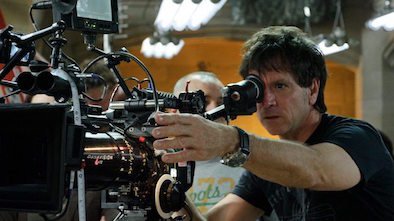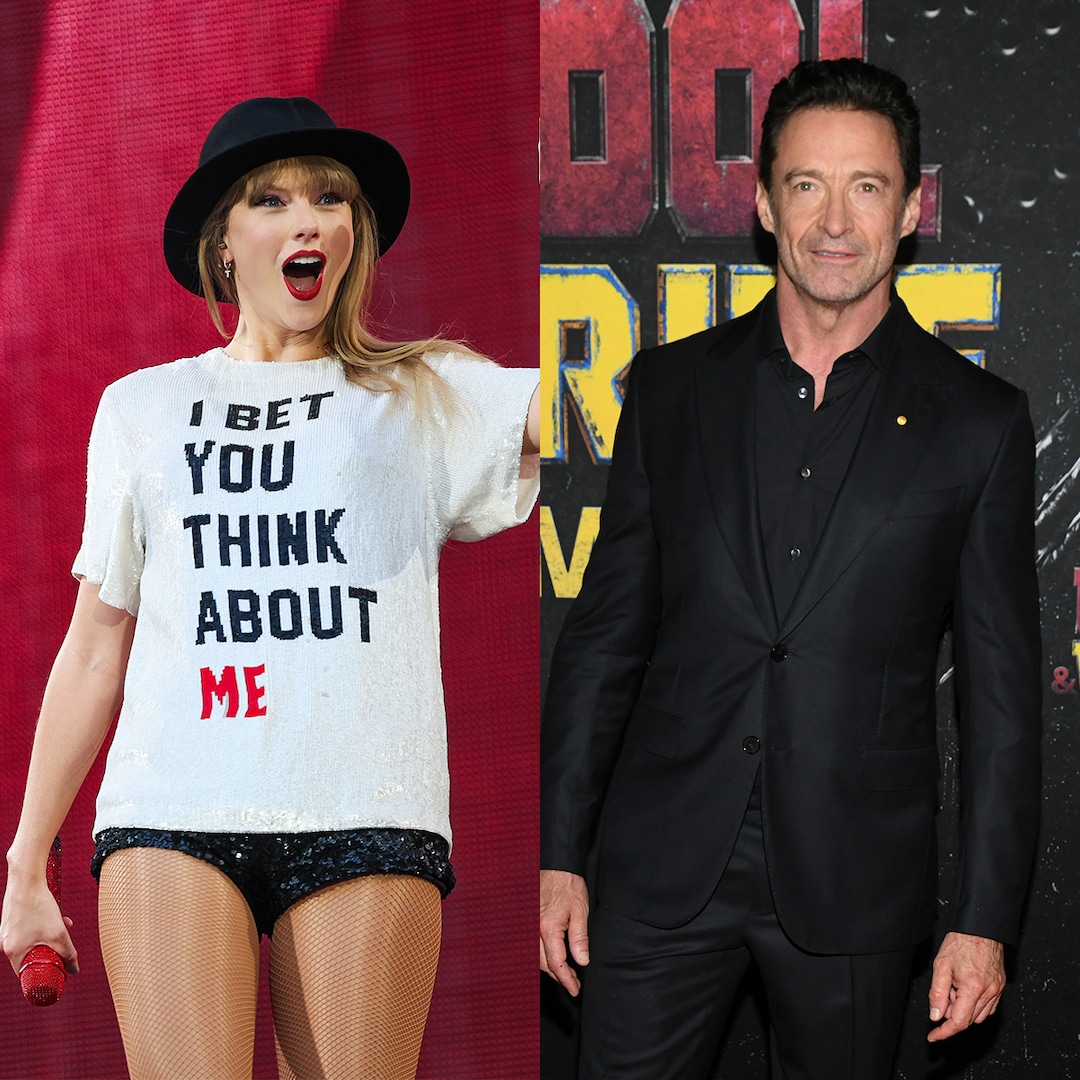
Paul Cameron The Commuter Interview
Dec 22, 2022
Award-winning cinematographer Paul Cameron, ASC has shot some of the most stylish action-thrillers in recent years, with credits including Collateral, Man on Fire, Swordfish, Déjà vu, Total Recall, Dead Man Down, Gone in 60 Seconds, Pirates of the Caribbean: Dead Men Tell No Tales, and the pilot to the HBO series Westworld. His newest feature project, The Commuter, finds him working with director Jaume Collet-Serra (The Shallows, Unknown, Non-Stop) on a straight-ahead genre picture for action film fans. The fast-moving, high-concept thriller takes place predominantly on a moving train, and all train interiors were shot on stage with blue screens. There was also a Grand Central Station practical stage for shots where the train was pulling into the station. Cameron’s work on the film is a compelling exploration of the nexus of filmmaking, technology, and innovative design. Back to the Movies’ Nick Clement spoke with Paul about working on a self-contained thriller such as this one, collaborating with mega-star Liam Neeson, his partnership with Collet-Serra, and what he loves about his job the most.
Paul Cameron’s Technical Specs for The Commuter
Cameras: ALEXA MINI ARRIRAW
Aspect Ratio: 2.40:1
Lenses: Arri Uncoated Master Primes
Rental House: Arri London
Location: Pinewood Studios/Stage NYC/New Jersey for Background Plates
Lighting: Interactive light rig with 60 Mac Viper Performance Moving Lights. 60 Skypanels. Created interactive light for train/subway tunnel light FX (passing trains; entering and leaving train station; exiting tunnel into late afternoon sun; transition to dusk then night for final scene)
Thanks so much for taking the time to chat, Paul. We’ve spoken a few times, and I love when we’re able to discuss movies as I’m such a big fan of your work. Anytime I get the chance to mix it up with you, I know it’s going to be fun!
Cameron: Great, yeah, it’s always a pleasure! And The Commuter was a blast to put together so I’m excited to see what people think of it.
Was this your first time ever working with director Jaume Collet-Serra?
Cameron: We’d worked together in the past on a bunch of commercials, but this was my first feature experience working with him. Jaume is great because he knows how to collaborate while still sticking to his guns on what he feels is right for the project. He works fast, he’s got amazing energy, and because he’s done a few films with Liam Neeson, they’ve developed a short-hand, which was great to see on set. He’s a very innovative filmmaker and when someone is open to collaboration it makes my job more enjoyable. I hadn’t seen Jaume in a while before we got together for The Commuter, but I was instantly reminded of his passion and I love how he’s always trying to elevate the genre with these types of movies. He’s always looking to surprise people which makes my job even more exciting.
What was it like working with Liam Neeson? I do believe this was your first time?
Cameron: Yes, we hadn’t worked together in the past, so it was of course thrilling to get involved with the project knowing that he was the star. There’s a certain expectation you have when the director has worked with the leading actor on more than one occasion, and because Jaume and Liam are so tight, it was a very relaxed atmosphere despite the challenges we faced on the production, all of which were of the technical variety. Liam is the consummate gentleman, incredibly dedicated to his work, and he’s always “big-screen ready,” if you know what I mean. He wants to get going every day on set and he knows how to do it all. He’s also a pleasure to light – he’s got that amazing face and light really bounces off of it in unique ways.
Can you explain more about what you had to design and build in order to pull off certain aspects of this shoot?
Cameron: I designed and built a camera rig that travelled down the length of the entire train car, with a custom rail and winch system integrated into the train. We utilized a small Stabileye Stabilized Head, and the rig had the ability to extend or lower the camera, as well as having a separate Z Axis Pan motor that allowed for travelling down aisles and the ability to wrap the camera around a character at the same time. Everything was wireless. Additionally, we utilized the Stabileye Stabilized Head for extreme handheld work.
Because The Commuter is predominantly a one-location thriller, what challenges did you and your technical team face?
Cameron: It was an incredible challenge to pull this movie off. We shot on a set that comprised one full train car, and then 1/8th of another. It was always a question of how could we simulate the train going through tunnels, with light reflecting off of the windows, and streaking and highlights. Because we shot the film in a bluescreen environment, he knew we had to make the entire experience feel real, otherwise the audience would be taken out of the moment. My wife and I went to NYC during pre-production and we shot reference plates of the train going up the Hudson River, and all of the pre-viz and prep we did really helped us when deciding what we’d do on set. It’s all about breaking each piece of the film down, and how can we embellish in certain spots, with trees and buildings in the background. And because we shot the film at Pinewood Studios, we were able to take advantage of certain things when we filed the big crash at the finale. And I think it came out really good, as we shot some sequences in NYC, and did aerial work there over 125th Street, and near Yankee Stadium.
How much harder is it to light each shot when you’re working in a CGI-dominated environment?
Cameron: It’s always hard when you’re lighting in an all-CGI environment, but I’ve worked on big productions and small productions where CGI has been used, and it’s all about finding the right amount of interactive light. On The Commuter, we were always thinking of how to make things look both real and stylish as that’s the sort of picture that this is, and you’re always looking for ways to make things more dramatic and realistic even when you’re playing around with the aesthetics. And then it’s up to the amazing CGI artists who marry everything together, which is a big part of a movie like this, as you have real elements like the actors and the sets and then the background bits which have to be seamlessly blended with everything else. You’re always looking for the right type of shadows, and the how the varying shades of colors are all intermingling with each other. We had a tremendous production designer on The Commuter, Nigel Phelps, who has done some brilliant work, and my job was helped considerably because of his immense talent.
You favor shooting in widescreen, correct?
Cameron: Yes, I love the 2.40:1 aspect ratio. I see the world in landscape mode so when I shoot films that’s where my head and heart are. Of course, I’ve shot in 1.85:1 for more intimate projects and I’m not opposed to working within that framework, but on The Commuter, it made total sense to shoot in full widescreen as the length of the train car invited that method of shooting. It also helped to conceal the fact that we had no roof on the train car while shooting!
What was the biggest surprise you had while filming The Commuter?
Cameron: I think it was the overall beauty that we achieved with shooting in an all-bluescreen environment, and achieving a level of verisimilitude that we were happy with. When you see a scene that looks like it’s made up of natural light, and you know the time and energy that went into making it look that tangible, then that makes me happy. It’s a very difficult but rewarding process.
You’ve shot a lot of action-thrillers, and it’s been interesting to see how the middle-budgeted movie has sort of fallen by the wayside in terms of the major studios. The Commuter is a Lionsgate release, and they’ve been picking up the slack with these types of entertainments. What’s your take on the shifting of attitudes at the studios?
Cameron: There really is no “middle” anymore at the studios, so as a result, we’ve seen this explosion of newer, smaller studios who are taking chances with these types of genre movies, which were at one point the bread and butter at the major studios. Their release calendars thrived on programmers, and then they had one or two “tent-pole” movies, and some “awards contenders.” We’ve also been witness to a major change in the paradigm of television, which has attracted some seriously talented story-tellers because of the lack of willingness on the part of the studios to tell certain stories. When I got the call to shoot the pilot for Westworld, I knew within five minutes that it would be different. They treated that production like a movie and they got great people top to bottom to work on that production. But yes, films like The Commuter are getting rarer and rarer.
Is there anything you’d like to tackle in the future? A particular genre which interests you?
Cameron: I’d love to shoot a full-blown western. The experience on Westworld was terrific and it opened my eyes to that type of visual storytelling, so going back to do a real western would be great. But we both know that there aren’t too many westerns getting financed these days. Doing a big period piece would be great, where I could really concentrate on detail and history and trying to re-create the past. I’m always looking at material for both movies and television and it’s just a matter of finding something that excites you enough to work on it for as long as it takes to work on these big endeavors.
What have you most recently been working on?
Cameron: I had the opportunity to work on a 20 minute short film, which was a lot of fun to put together because it was both a futuristic and humanistic story, and I hadn’t done a short in a long time. It was a five day shoot, and the film was directed by Sophia Banks, who is a very talented filmmaker.
The Commuter opens in U.S. cinemas on January 12th, and in the U.K. on January 19th.
Publisher: Source link
Lamorne Morris Thinks Kamala Harris Has This Advantage Over Donald Trump
Trump said that President Joe Biden, who dropped out of the race on Sunday while recovering from COVID-19, never really had the infection. “Really? Trump thinks Biden never had COVID?” Morris said on Monday. “You don’t pretend to have COVID to get out…
Jul 26, 2024
Khloe Kardashian Is Ranked No. 7 in the World for Aging Slowly
Khloe Kardashian's body is out for more than just revenge. In fact, the 40-year-old is one of the world's slowest agers—a revelation she learned after taking a blood test to determine her body's biological age compared to her calendar age.…
Jul 26, 2024
Reactions To Trump’s Kamala Harris Donation
Just as many white Americans used their Obama vote to excuse their internalized racism, Lauren Boebert seems to have adopted this same ideology, ignoring Trump's long record of racism against African Americans, Mexicans, Hispanics, Native Americans, Muslims, Jews, and immigrants, and discrimination against women and…
Jul 25, 2024
Hugh Jackman Reveals What an NFL Game With Taylor Swift Is Really Like
Hugh Jackman is happy to fill any blank space in Taylor Swift’s NFL game suite. In fact, the Deadpool & Wolverine star recently detailed his experience attending a Kansas City Chiefs game to root on Travis Kelce, alongside Ryan Reynolds,…
Jul 25, 2024











